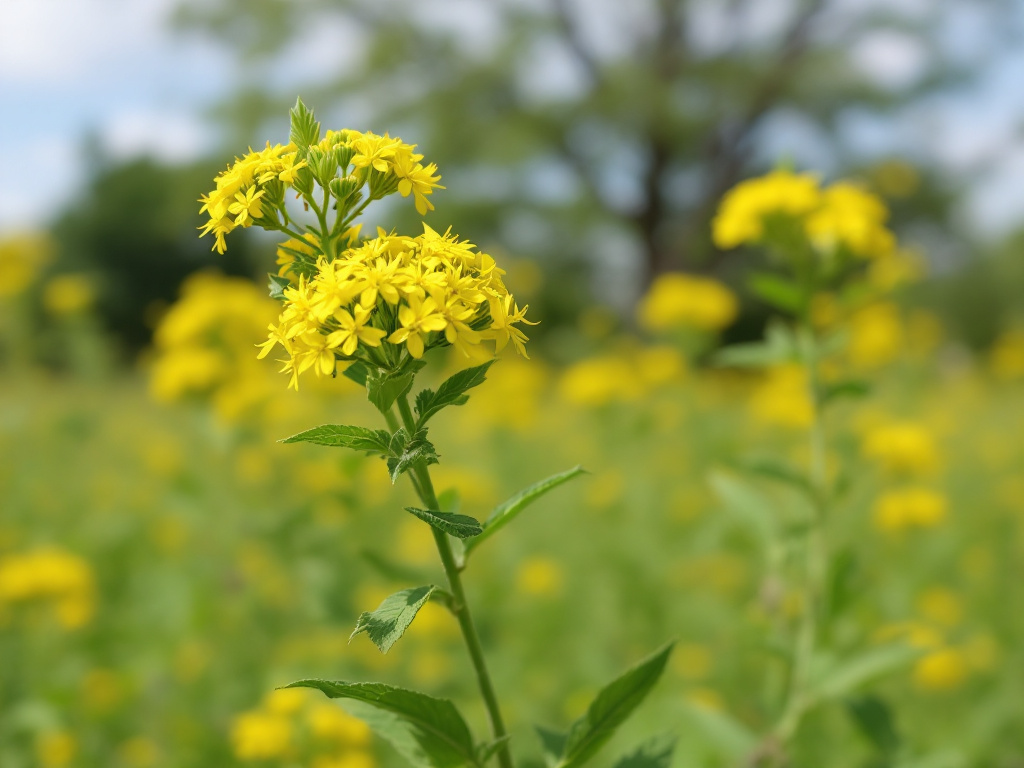Image generated by flux-ai.io & content generated by ChatGPT Version 4o-mini
Tackling Flat-Top Goldenrod: A Local Guide to Managing This Pesky Weed
Residents of Duval County, Florida, are no strangers to the challenges of maintaining healthy pastures for livestock and other agricultural activities. One common obstacle that many local farmers and landowners face is a weed called flat-top goldenrod (scientific name: Euthamia caroliniana). While it’s not a true goldenrod, this perennial plant can wreak havoc in poorly managed pastures if left unchecked.
What Is Flat-Top Goldenrod?
Flat-top goldenrod can grow up to three feet tall and typically appears in clusters. It thrives in areas where the soil is acidic, often growing alongside other weeds like dogfennel and broomsedge. Its distinctive flat-topped clusters of yellow flowers bloom from September to November, making it easy to spot if you know what to look for. However, it can be confused with dogfennel early in the growing season. A simple way to tell them apart is by examining the stem: flat-top goldenrod has a tougher, more woody stem, while dogfennel’s stem is softer and more succulent.
Why Is It a Problem?
The real issue with flat-top goldenrod is its ability to spread quickly through seeds and a creeping root system, making it a tough competitor for the grasses and crops that are beneficial for livestock. If you’ve ever walked through a pasture and noticed areas overrun with this weed, you’re not alone. Many local farmers have reported that flat-top goldenrod can reduce the quality of their forage, which is vital for cattle and other grazing animals.
How to Manage It
Managing flat-top goldenrod requires a comprehensive approach, incorporating various weed management practices. The best way to control this weed is through chemical methods, specifically herbicides, but timing and identification are crucial. The most effective period for treatment is from late April to early June before the plant starts branching out. After this point, herbicides lose their effectiveness, and you may need multiple treatments.
For those considering herbicide options, products containing dicamba or 2,4-D have shown the best results. However, it’s essential to follow label instructions and consider local regulations. Flat-top goldenrod can be resilient; a follow-up treatment may be necessary within one to two years.
In addition to chemical controls, consider cultural practices to improve pasture health. Flat-top goldenrod often appears in pastures with low soil pH, which can hinder the growth of desirable grasses. Conducting soil tests can help you adjust the pH to better support your pasture plants and reduce the chances of flat-top goldenrod taking hold. Healthy, well-managed pastures can compete more effectively against weeds.
Using preventative measures is also crucial. Keep your fields clean of weeds, and control or mow weeds at the edges of fields to prevent seed formation. Proper site selection and maintaining healthy crop rotations can further reduce weed establishment.
Local Impact
For Duval residents who depend on agriculture, understanding how to manage weeds like flat-top goldenrod can make a significant difference in pasture health and livestock production. With agriculture being a vital part of our local economy, effective weed management not only benefits farmers but also supports the broader community by ensuring a steady supply of local produce and livestock.
If you’re struggling with flat-top goldenrod or want to learn more about managing your pasture effectively, consider reaching out to your local UF/IFAS Extension office. They can provide valuable resources and guidance tailored to our unique Duval County environment.
In conclusion, while flat-top goldenrod presents a challenge, with the right knowledge and tools, local farmers and landowners can effectively manage this weed, ensuring healthier pastures and a thriving agricultural community in Duval County.
References
SS-AGR-353/AG361: Flat-top Goldenrod (Euthamia caroliniana): Biology and Control in Pastures. (n.d.). Ask IFAS – Powered by EDIS. https://edis.ifas.ufl.edu/publication/AG361

